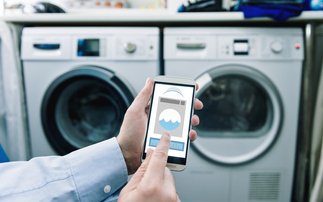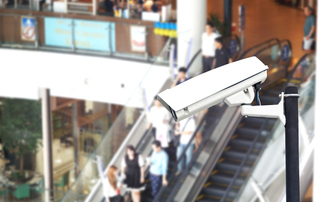A truly smart office means greater productivity and fewer headaches for IT teams
The smart office sector is booming, with the market expected to hit almost $60 billion by 2025. However, that figure is only a fraction of the Internet of Things (IoT) sector, which is likely to hit a gargantuan $1.6 trillion in the same time frame. Together these two figures demonstrate that workplaces are set to have vastly more connected devices operating within them than ever before.
For those working in IT or AV management, that can be a daunting prospect. Is it possible to integrate new solutions into already complex networks and exceed the expectations of the business, all while trying to keep up with an industry that's moving at hyperspeed?
To answer that, it's important to grasp what new workplace management solutions like Sony TEOS can offer not just the wider employee base but also to IT teams, and how their capabilities will continue to evolve.
The streamlined office
For a long time, rolling-out new workplace technologies was painful. Whether having to go screen to screen across every digital signage solution in a ten-storey office to install an update via USB, or getting called in to help a hapless new joiner struggling to connect to the projector. IT management could sometimes feel a thankless task. Today, though, more devices doesn't have to mean more headaches for the IT team.
Overall, the user experience of workplace technologies is finally catching up with consumer trends. With TEOS Connect, seamlessly and wirelessly mirroring a laptop screen to a display at work can now be as straightforward as streaming Netflix on the TV at home. Likewise, the rise of IP-enabled devices has drastically cut the time it would take to update software or signage content.
Booking a room takes one click thanks to solutions like TEOS Book, with its Outlook compatibility. It can even be done directly on a stylish, high-spec tablet positioned outside the room, which syncs in real-time with all major corporate calendar systems.
When it only takes the press of a button to achieve these everyday tasks, and not a tangle of outdated ports, faulty wires or obscure and unreliable plug-ins, IT call-outs become much rarer. This frees up time for the IT professionals to focus on more critical tasks.
Those new standards of user experience and integration however can also extend beyond the office worker's meeting room, and directly into the hands of IT teams. Truly next generation technology in the workplace should focus on driving new standards in integration and compatibility. Sony is a champion of open API configurations and combined with a comprehensive range of solutions - from laser projectors to professional displays and sensors - this means IT managers today can precision-tailor solutions to their needs, rather than attempt to shoehorn in solutions that aren't quite right.
Freeing up time, focusing on the bigger picture
On the one-hand businesses seek to make the most out of the growth of workplace technologies which can streamline workers and make IT team's lives easier. On the other hand, though, they are increasingly focused on resource reduction and improving sustainability. While these two goals may not seem naturally aligned, they are united by new IoT technology and workplace management solutions.
New sensors and IoT devices can help facilities and IT managers to take granular measurements, presented in a straightforward dashboard interface, of everything from light levels to meeting no-shows and occupancy. This enables them to both gather useful metrics to support future workplace strategies and tailor current solutions precisely to dynamically changing use cases, in real-time. Combined with protocols for automation in the workplace, users can create customisable workflows, for example to set room temperature and devices to adjust autonomously based on variables such as CO2 levels and occupancy.
In layman's terms; if it's too warm, rooms can be programmed to automatically become cooler, while, if a room is empty, devices will switch themselves to low-power modes. Across businesses both large and small, the potential savings from these technologies, both in terms of energy costs and CO2 output, are vast - good for the business, good for the planet.
Orchestrating the office
We are entering a stage where our workplace technology is truly connected. Not just phones and laptops, but digital signage, business projectors, sensors and more. This can drive incredible new efficiencies on every scale - for individual workers who waste no time setting up meetings to the business which can present new sustainability milestones to shareholders.
And, as this technology has become more fundamental than ever before to overall business performance, the importance and responsibilities of the IT team has never been greater; they are the conductors in the great orchestra of office technology.
Yet that doesn't mean their job has to get harder. If anything, the hardest part is beginning the journey to find the right solution. Sifting through a multi-trillion dollar industry to find the right piece of technology sounds like finding a needle in a haystack.
This is where Sony is uniquely positioned to help. Sony has worked with over 225 organisations, including Siemens and Capgemini, across 28 countries, to transform workplaces and unlock the potential of advances in IoT device technology. The backbone of these installations is Sony TEOS, the complete workspace management solution which can meet every business need from meeting room booking systems and digital signage content creation to gathering device management diagnostics and much more.
Combined with the suite of Sony hardware such as laser projectors and BRAVIA Professional Displays, TEOS offers the most comprehensive solution on the market. It can unlock new value from connected devices, save money and resources, while also being scalable and flexible to meet changing needs. New features are constantly being added as the technology adapts to learnings from world-leading businesses, and Sony continues to invest in cutting-edge research and development.
This is part of Sony TEOS' DNA; recognising that not only are no two businesses requirements the same, but no business's requirements, in light of the lightning fast smart-office advances, will stay the same.
Carl Standertskjold is Corporate Segment Marketing Manager, Sony Professional Solutions Europe.
To discuss how Sony could meet your ever-changing transformation needs visit pro.sony/TEOS or email Carl Standertskjold at [email protected]















